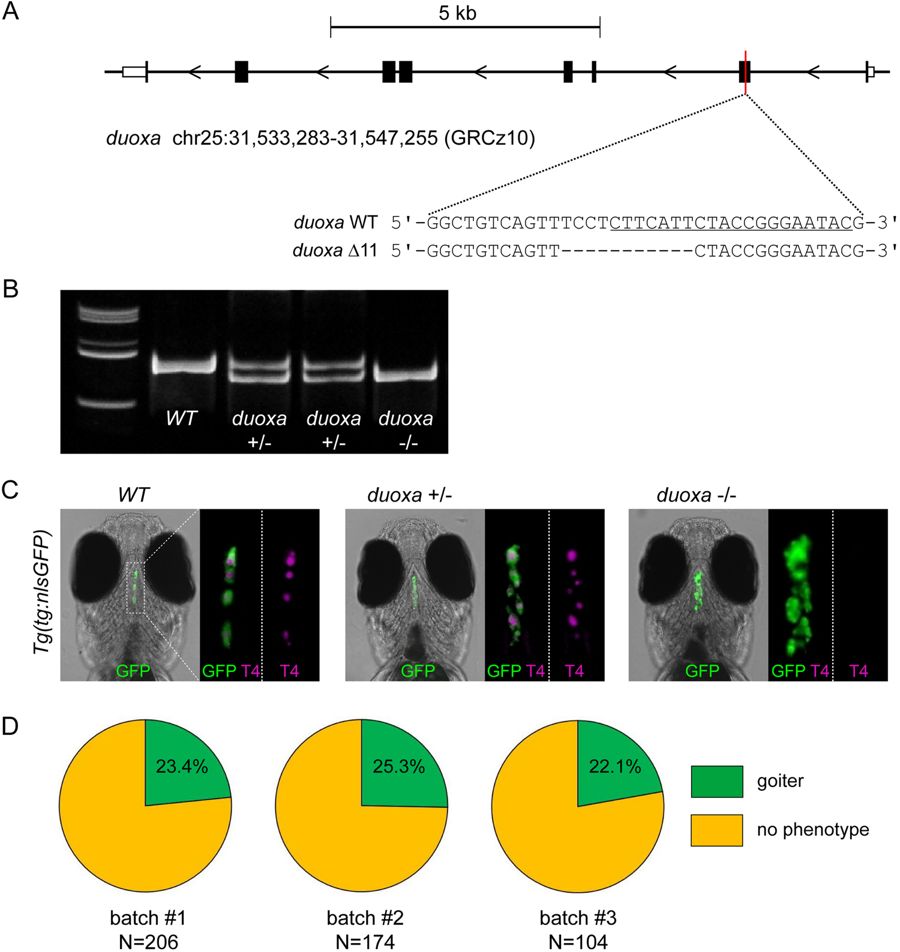Fig. 7
duoxa germline mutants develop goitrous thyroid phenotypes. (A) Zebrafish duoxa genomic locus on chromosome 25 with sequences for the wild-type (WT) allele and a mutant allele (duoxa Δ11) containing a 11 bp deletion in exon 2. The sgRNA target site is underlined in the WT sequence. (B) PCR analysis of genomic DNA allows for sensitive detection of WT and duoxa Δ11 mutant alleles in individual fish (F3 generation). Polyacrylamide gel electrophoresis of PCR amplicons of WT, heterozygous and homozygous duoxa Δ11 carriers. Full-length gel is shown in Supplementary Fig. 7 from which lanes 1, 2, 3, 4 and 6 are shown in the cropped gel image. (C) Thyroid phenotyping of duoxa Δ11 mutant fish maintained on a Tg(tg:nlsEGFP) background. Immunofluorescence staining (GFP and T4) of 6 dpf larvae (ventral view, anterior to the top, scale bars: 20 µm) showed goitrous thyroid enlargement and absence of detectable T4 staining in all homozygous duoxa Δ11 fish (N = 30). Larvae with a normal-looking thyroid morphology (N = 30) were genotyped as either WT or heterozygous carriers of the duoxa Δ11 allele. For each larvae shown, 3.5-fold magnified views of the thyroid region are displayed (merge of GFP/T4 and T4 only). (D) Proportion of larvae with goitrous thyroid phenotype as detected in the progeny of three independent inbreeding experiments with heterozygous duoxa Δ11 fish.

